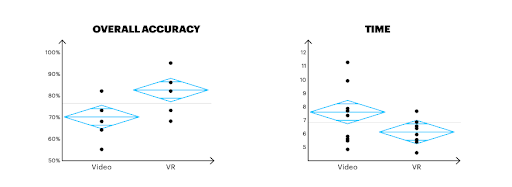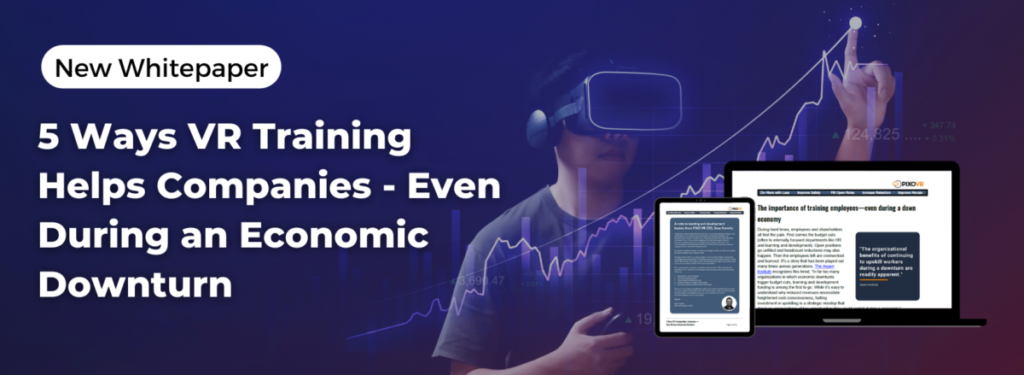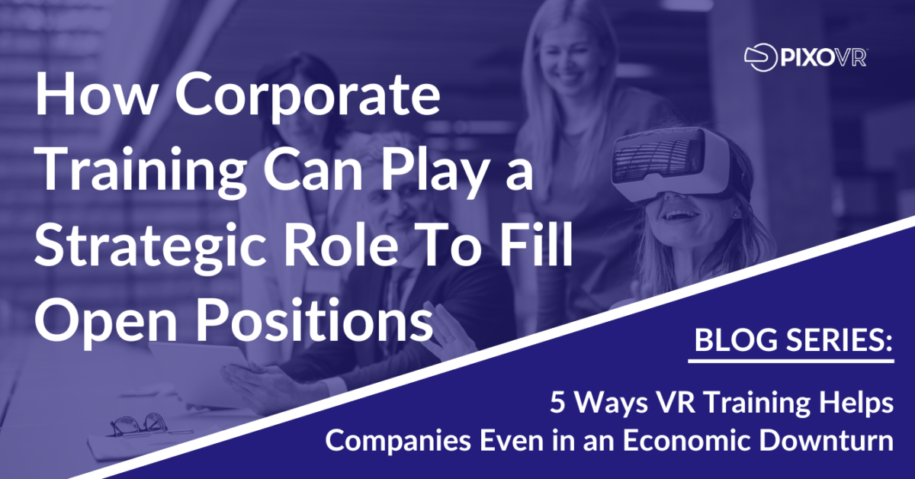The following is an excerpt from our whitepaper: ‘5 Ways VR Training Helps Companies Even in an Economic Downturn’:
We’ve been struggling with a skilled labor gap for years and Covid only made it worse. Companies realized they needed to hire unskilled workers and train them if they wanted to remain in business. This sounded great in practice, but traditional training methods aren’t so good at teaching hard skills. Combine that with the fact that there is often pressure to onboard fast and put workers into their jobs before they are ready.
After 5 years of this cycle, companies are now seeing some very serious problems creep up that are affecting their bottom line. Namely, redos. Redos are the mistakes made by employees that have to be fixed, or redone. That could be everything from an error in an assembly line that causes a product recall or repeated mistakes in a restaurant that loses customers. This article uncovers this problem and provides evidence on how virtual reality (VR) is the solution for more effective skills training.
Companies are feeling the pain of ‘redos’
The training programs that are being applied to teach hard skills to unskilled labor lack immersion and the ability to practice the skill. This was adequate for skilled labor that just needed to be able to apply their existing skills to a new process or piece of equipment. But for employees that don’t have experience, this isn’t enough.
General Dynamics felt the pain of this problem. They build ships and over time the company saw mistakes in the field that had to be redone climb to a seven figure cost per ship. When they analyzed the issue, they realized that ineffective training was to blame.
Similarly, Chick-fil-A experienced difficult onboarding new employees using traditional methods. They were providing written manuals to young adults who weren’t reading or engaging with the material. This resulted in bagging mistakes which was costing them customers and reducing the lifetime value of a customer. In other words, they noticed the mistakes were costing them revenue.
Redos aren’t the only problem with traditional training. Companies like General Dynamics and Chick-fil-A have also seen increases in on the job accidents. All the more reason why these companies are turning to VR training to better engage employees and improve skills training retention to reduce redos and keep employees safe.
How VR can be used to upskill workers and reduce mistakes
Onboarding and upskilling workers with virtual reality has been proven to be faster and more effective than video and classroom learning methods. Universities have been performing research studies for years validating this fact. The University of Maryland found an 8.8% average increase in memory recall with VR. Iowa State University used VR to help train welding students and 100% of the students who used VR training performed better on weld testing than students who used traditional training methods.
A study done by Accenture on VR training reinforces these findings that it is a superior learning method for learning hard skills. Accenture tested two groups on learning how to replace a toilet. One group used VR and one video learning. When the training was completed, the learners were asked to assemble and install a toilet in real life. The VR learners demonstrated on average 12 percent higher accuracy and 17 percent faster time to completion than instructional video participants.

These results have been further cemented by real-life use of VR training. For instance, Homegrown restaurants use VR training in onboarding and realized a 27% increase in the success of employee onboarding. That means new employees stuck with the program and went on to work in the restaurants. United Rentals also uses VR training for onboarding and experienced a 50% reduction in the time to train employees with VR.
Bottom line—VR training programs can help employees learn the skills needed faster, and will do the job better. This saves companies money by improving productivity and reducing expensive mistakes.
VR training is a must-have for companies training unskilled labor
Adding VR content to onboarding and skilled labor training is now a critical change for companies to make in order to manage costs and stay competitive. Virtual reality cost-effectively allows employees to practice skills in life-like environments. There is a large library of existing VR training for hard skills and it is easier than most L&D leaders think to add in custom elements.
If you are a learning and development leader interested in learning more, here is a great paper with additional evidence on the benefits and ROI of VR training. And here is a guide on the steps to add VR into your current training program. The right training can help reduce the skilled labor gap and save big money. And that is a big win for L&D programs—especially as things get tight in a questionable economy.
Ready to talk with VR training content experts on getting the right training for your skilled labor needs? Talk to an expert here!
Download the whitepaper: 5 Ways VR Training Helps Companies Even in an Economic Downturn’:


Leave a Reply
You must be logged in to post a comment.